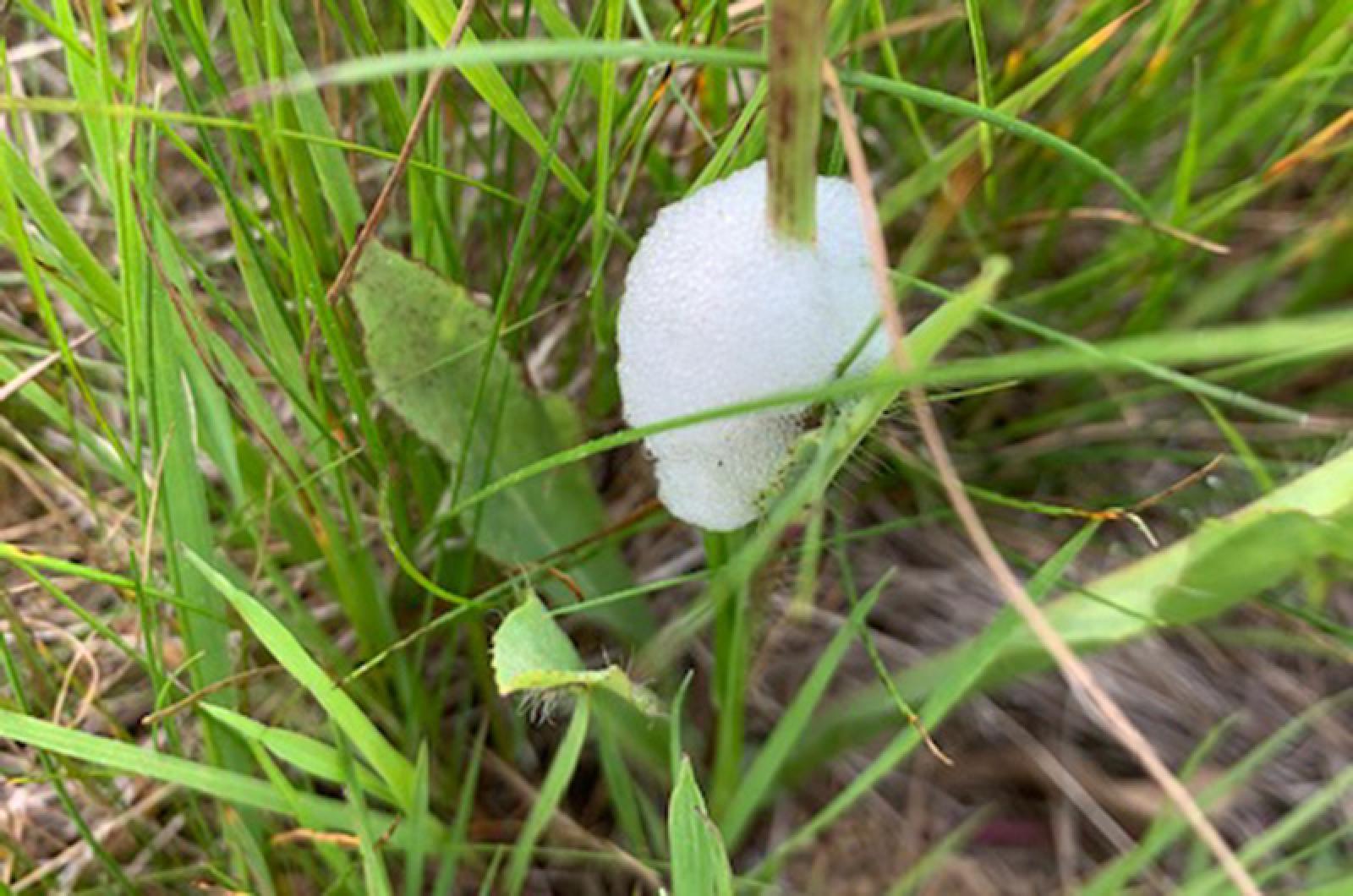Froghoppers really do live life in a bubble.
Also known as spittlebugs, the nymphal form of these insects frequently find themselves in foam. The spittle-like foam that materializes on plants has been called cuckoo spit in reference to its appearance in the spring when cuckoo birds, those harbingers of spring, are first seen. It is also called frog spit and snake spit. However, this substance is not spit.
Philip G. D. Matthews, a researcher studying spittlebugs in the zoology department at the University of British Columbia, sheds some light on why the name is a misnomer: “They’re really more piddlebugs, than spittlebugs.”
Spittlebug nymphs suck sap out of the xylem of plants. The xylem’s function is to ferry water and nutrients from the roots of a plant to its stems and leaves. The xylem is less nutrient-rich than the phloem that most sapsucking insects prefer. Thus spittlebug nymphs must be super suckers and obtain large amounts of sap in order to get the nutrients they need.
This insect superpumper can slurp three hundred times its body weight in xylem fluids in just one hour. And what goes in must come out.
Yes, spittlebugs pee and do so frequently and in copious amounts. One bug can produce up to 250 times their body weight in urine per day. For comparison, at that same production rate, an adult human would produce a few thousand gallons of urine per day.
It is bug urine that is transformed into the spittle seen on plants. Air is discharged from the insect’s abdomen and mixed with a glandular sticky substance to modify urine into a foamy and bubbly mass that surrounds the nymph. When you see this substance, move around the foam to observe the red-eyed, wingless larva inside. The foam serves to protect the nymph and provides thermal and moisture regulation. Not surprisingly, the foam has a bitter taste that dissuades even the most persistent predator.
So while this spittle provides benefits to these bugs, it also creates a conundrum: breathing. Insects lack lungs and respire through holes, called spiracles, in their bodies. To respire, the spittlebug nymphs think outside the bubble. They push the tip of their abdomen up like a snorkel, allowing them to breathe.
There are often complications, though. When threatened, spittlebugs will retreat deeper into their bubbles and can’t get enough air. Then they are able to slow and even temporarily stop respiration. They can’t do that for long, however, so as a last resort they will break bubbles to release oxygen.
The nymphs spend five to eight weeks in their frothy world, changing colors as they mature. Young nymphs are orange, then become yellow, and finally green before they metamorphose in a single, large bubble into an adult and emerge, leaving any extra spittle behind to dry and become powdery.
There are more than 20,000 species of spittlebugs that reside in a variety of plants. Some local favorite plants of theirs include juniper, pines, strawberries, legumes, and flowers. If you find spittlebugs on your plants, don’t be concerned, as they rarely do any damage to their host. If the idea of urine spume does repulse you, simply spray with a hose or jet of water to disperse the foam and insects. Know that the adults will lay eggs that overwinter and will start the cycle again in the spring, so they will be back.
With the limited resources at their disposal, so to speak, what a clever cover this insect has evolved. Their ability to convert waste into wonder and harvest into habitat literally answers the call of nature.
Suzan Bellincampi is director of the Felix Neck Wildlife Sanctuary in Edgartown, and author of Martha’s Vineyard: A Field Guide to Island Nature and The Nature of Martha’s Vineyard.




Comments (1)
Comments
Comment policy »